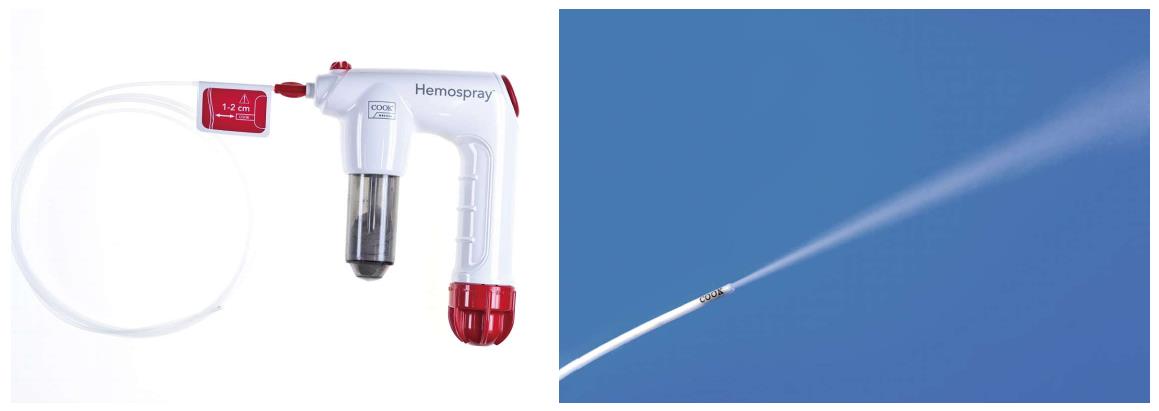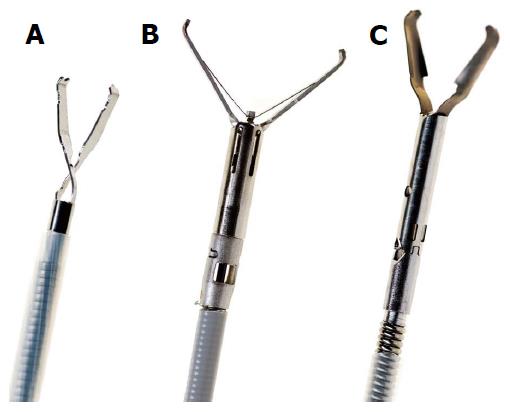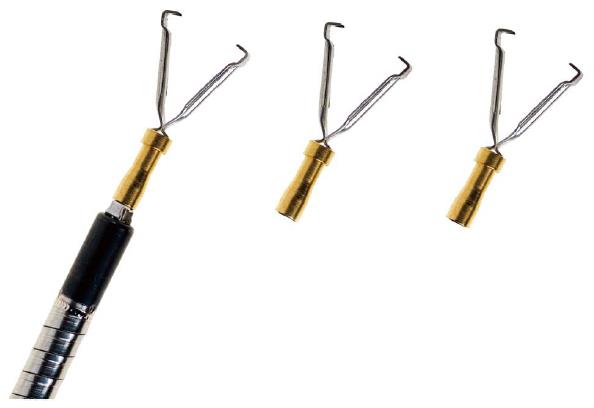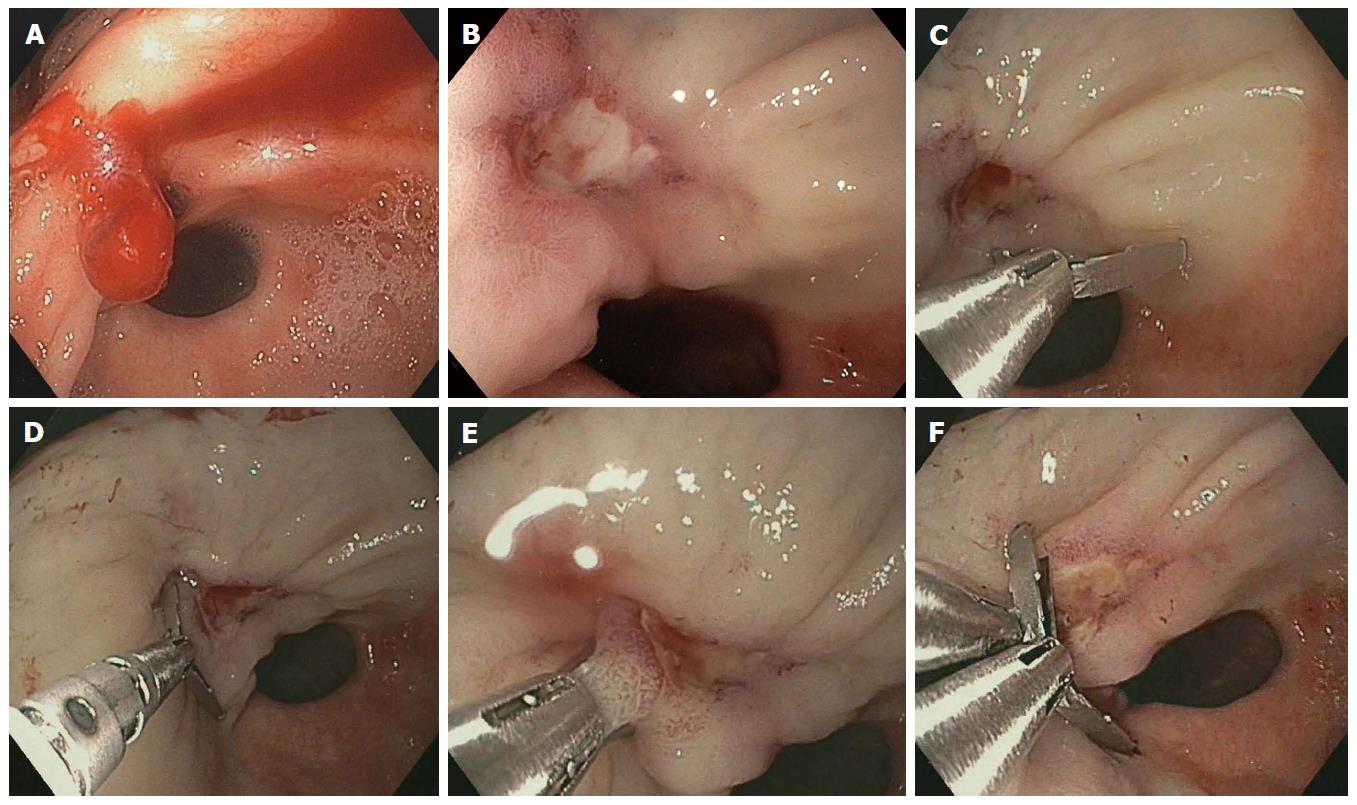Copyright
©The Author(s) 2016.
World J Gastrointest Endosc. Feb 25, 2016; 8(4): 205-211
Published online Feb 25, 2016. doi: 10.4253/wjge.v8.i4.205
Published online Feb 25, 2016. doi: 10.4253/wjge.v8.i4.205
Figure 1 Hemospray (Cook Medical, Ireland) with a CO2 pressurized handle the mineral powder is applied with a catheter introduced through the working channel of the endoscope.
Figure 2 Over the scope clip (Oversco, Tübingen, Germany).
The clip is preloaded on a transparent cap that can be fixed on the distal end of the endoscope. After suctioning of the bleeding source into the cap the clip is placed over the bleeding site.
Figure 3 Different types of through the scope clips.
A: Quick clip, (Olympus, Hamburg, Deutschland); B: Instinct clip (Cook Medical, Limerick, Ireland); C: Resolution clip (Boston Scientific Germany, Ratingen, Germany).
Figure 4 Clip Master 3 (Medwork, Höchstadt/Aisch, Germany) is a through the scope clip with three consecutively preloaded clips.
The clips can be applied without changing the device.
Figure 5 Instinct clip.
A: Forrest Ib ulcer in the prepyloric antrum; B: After injection of diluted epinephrine solution and clearing of the blood clot a small feeding vessel is identified; C: The instinct clip (Cook Medical, Ireland) is positioned close to the lesion and then the branches are rotated to the desired angle; D: The clip is placed at the basis of the ulcer; E: The clip is closed in a proper position; F: The clip is released and a second clip is positioned on the opposite position.
- Citation: Goelder SK, Brueckner J, Messmann H. Endoscopic hemostasis state of the art - Nonvariceal bleeding. World J Gastrointest Endosc 2016; 8(4): 205-211
- URL: https://www.wjgnet.com/1948-5190/full/v8/i4/205.htm
- DOI: https://dx.doi.org/10.4253/wjge.v8.i4.205

















